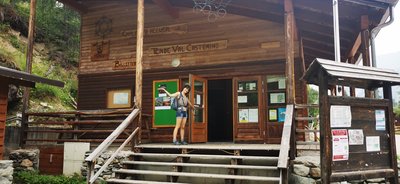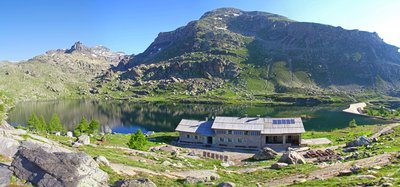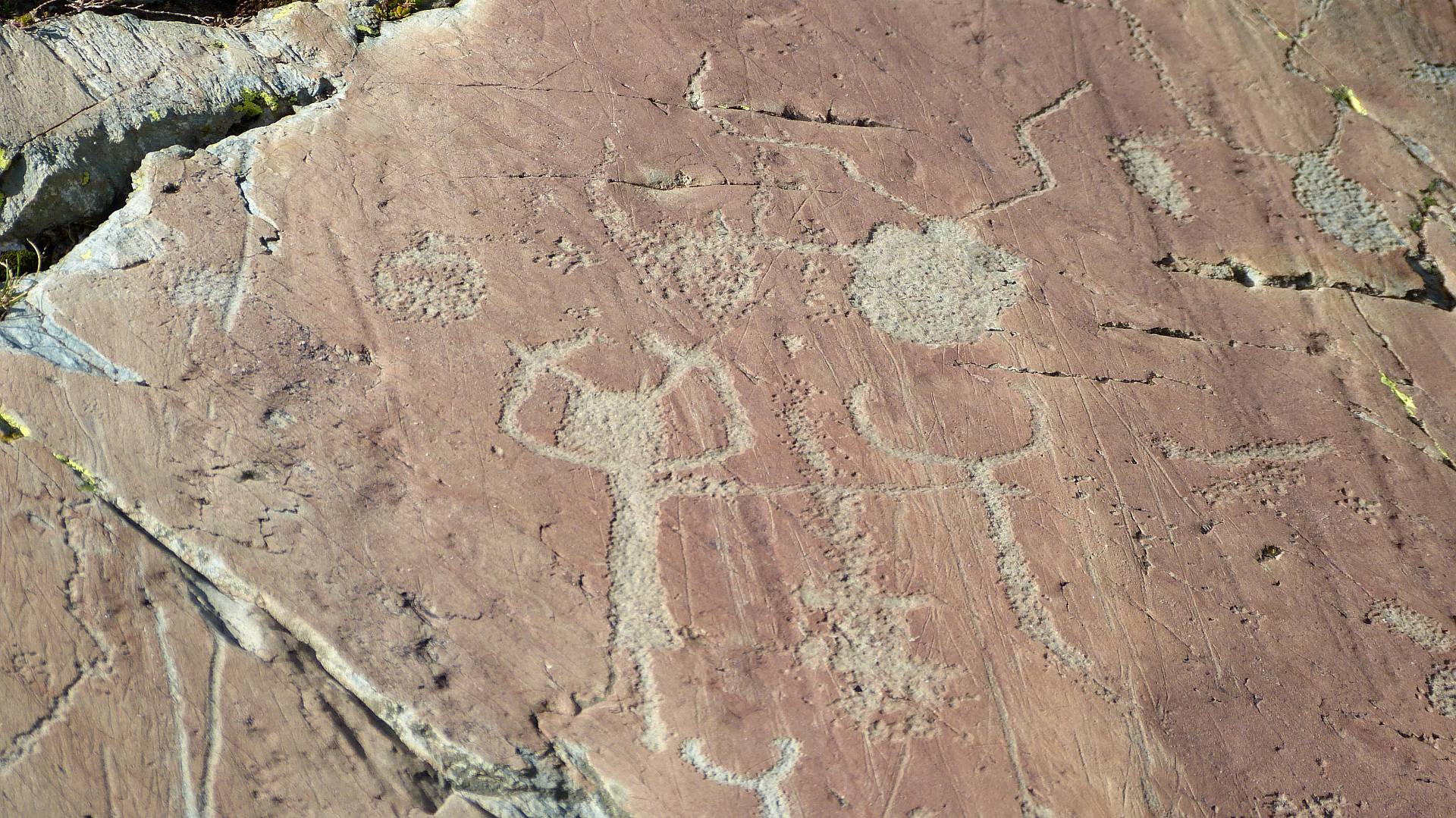
2. Grand Tour of the Merveilles - In the heart of the Mercantour National Park - Stage 2
5 points of interest
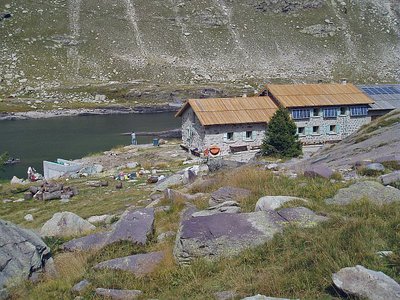
Le refuge des Merveilles - MALTHIEUX L.  Refuge
RefugeLes Merveilles refuge
Club Alpin Français
Capacity: 75 in refuge – Possibility of eating and having a shower
Warden: 15th June to 15th September: Hugo PUTELAT
(Refuge telephone): 04.93.04.64.64
Winter: October to June (upon reservation): Mouloud CADDUR refugedesmerveilles@ffcam.fr
The refuge is therefore OPEN for self-catering and with a warden when a reservation is made for 8 people or more, 19 places available for hikers who have covers (2 per person) and pillow.
If you wish to have a warden at the refuge, contact: refugedesmerveilles@ffcam.fr
Useful numbers:
Tende Tourism Office/Park House: 04 93 04 73 71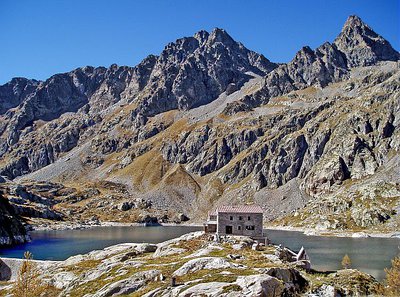
Le lac et le refuge de Valmasque le 16 octobre 2006, la cime de chamineye, (2921 m) - Franck GUIGO  Refuge
RefugeLa Valmasque refuge
CAF Refuge
Commune: Tende
IGN Map: 3841 OT
Departure: Castérino (entrance Park National du Mercantour)
Elevation: 540 m
Capacity: summer (54), winter (12)
Possibility of eating and having a shower
Warden: Mid-June – end September
Information CAF: 04 93 62 59 99
Out of season upon reservation: 04 92 31 91 20
CAF website: http://refugedevalmasque.ffcam.fr/reservation.html
Useful numbers:
Tende Tourism Office: 04 93 04 73 71
Park House: 04 93 04 67 00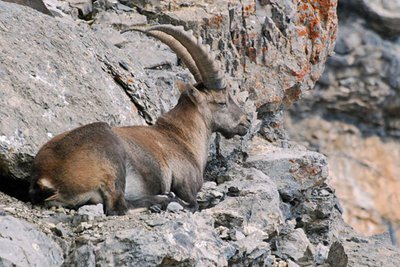
Un bouquetin mâle, (Capra ibex), couché sur du rocher en début d'automne - BRETON François  Fauna
FaunaAlpine ibex (Capra ibex)
From 1920 to 1930, 25 ibexes from Gran Paradiso were released in the royal reserve of Valdieri. Since 1987, reintroduction operations have been jointly undertaken by the Mercantour National Park and the Parco naturale Alpi Marittime. Today, the herds live around Col de Fenestre. The males do not live with the females. The latter remain with the kids and juveniles until they are two years old.
Les couleurs éclatantes des baies du sorbier des oiseleurs ou sorbier des petits oiseaux, (Sorbus aucuparia). - GUIGO Franck  Flora
FloraMountain ash (sorbus aucuparia)
A species of light, the mountain ash attempts, along with the larch and laburnum, to conquer the high pastures which have been abandoned by the flocks. Birds, particularly thrushes, love eating its seeds, which means that this elegant tree has spread far and wide. Its leaves provide light shade while its clusters of fruit are amusingly capped by the first snows. While the wood can be carved, the berries are rich in vitamin C and are used to make jam and, most of all, brandy.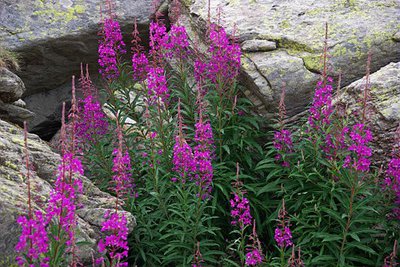
Epilobe à feuilles étroites, (Epilobium augustifolium). - CEVASCO Jean-Marie  Flora
FloraRosebay willowherb (Chamerion angustfolium)
A companion of the fir and the spruce, assisting their reproduction, rosebay willowherb lights up the clearings with its purple flowers from June to August. Its flowers develop in bunches at the end of a long stalk which can reach 1.2m in length, giving rise to light seeds with silky hairs, allowing them to be easily carried off by the wind which distributes them onto the northern faces of mountains and beside mountain streams up to 2000m in altitude.
Description
Go around Lac Long and head along GR52, towards the Vallée des Merveilles and then the Baisse de Valmasque (2549m - m94) which you will reach after a fair climb. You can take a break here and enjoy the magnificent scenery. Down below, the wild La Valmasque valley opens up. Have a good look at the lake of Basto which you will shortly be heading to.
At m95, leave GR52 and continue towards the lake m96. Keep heading due north alongside lake Basto; the way is relatively flat. The path heads down alongside the spillway from lake Basto, passing close to a small EDF refuge and soon reaching the black lake. The itinerary continues now along a small path above the green lake. At m97, follow directions for Castérino. You can make a short detour via the Valmasque refuge should you wish to. A small path featuring hairpin bends leads you first to the foot of a magnificent waterfall and then you will join the track. Follow it until it comes to an end; then entrance to the National Park. The itinerary subsequently continues until Castérino along the small tarmacked r1oad. Shortcuts are available at various stages along the road.- Departure : Les Merveilles refuge
- Arrival : Castérino
- Towns crossed : Tende
Altimetric profile
Recommandations
Report a problem or an error
If you have found an error on this page or if you have noticed any problems during your hike, please report them to us here:

